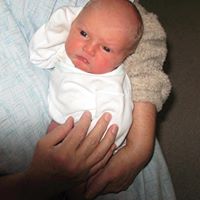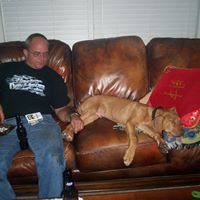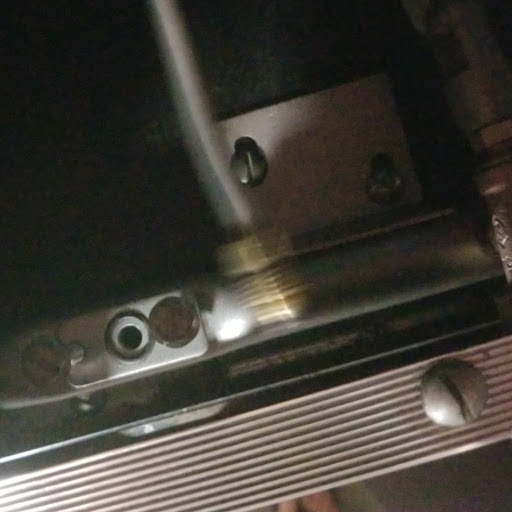John L Rapp
age ~46
from San Diego, CA
John Rapp Phones & Addresses
- San Diego, CA
- Redmond, WA
- 1201 John St, Seattle, WA 98102
- La Jolla, CA
- Jamul, CA
Us Patents
-
Shading Using Texture Space Lighting And Non-Linearly Optimized Mip-Maps
view source -
US Patent:7768523, Aug 3, 2010
-
Filed:Mar 9, 2006
-
Appl. No.:11/373755
-
Inventors:Daniel K. Baker - Bellevue WA, US
Michael V. Oneppo - Kirkland WA, US
Samuel Glassenberg - Kirkland WA, US
John Rapp - Seattle WA, US -
Assignee:Microsoft Corporation - Redmond WA
-
International Classification:G09G 5/00
-
US Classification:345582, 345426, 345427, 345587, 345608, 345609, 345610
-
Abstract:In a technique for rendering non-linear BRDFs that are stable in both the temporal and spatial domains, without serious interruption to the content creation pipeline used in most games, non-linear content is linearized by rendering in texture space at a fixed resolution. A MIP-map chain is calculated from this texture. The complete MIP-map chain is used for rendering on a display device. Low resolution reflectance parameters are used to approximate the highest resolution reflectance parameters as the object becomes smaller on the display device. The low resolution reflectance parameters are calculated using non linear fitting techniques.
-
Shading Using Texture Space Lighting And Non-Linearly Optimized Mip-Maps
view source -
US Patent:7973799, Jul 5, 2011
-
Filed:Jul 2, 2010
-
Appl. No.:12/829896
-
Inventors:Daniel K. Baker - Bellevue WA, US
Michael V. Oneppo - Kirkland WA, US
Samuel Glassenberg - Kirkland WA, US
John Rapp - Seattle WA, US -
Assignee:Microsoft Corporation - Redmond WA
-
International Classification:G09G 5/00
-
US Classification:345587, 345426, 345582, 345584, 345644
-
Abstract:In a technique for rendering non-linear BRDFs that are stable in both the temporal and spatial domains, without serious interruption to the content creation pipeline used in most games, non-linear content is linearized by rendering in texture space at a fixed resolution. A MIP-map chain is calculated from this texture. The complete MIP-map chain is used for rendering on a display device. Low resolution reflectance parameters are used to approximate the highest resolution reflectance parameters as the object becomes smaller on the display device. The low resolution reflectance parameters are calculated using non linear fitting techniques.
-
Characteristic Determination For An Output Node
view source -
US Patent:8432398, Apr 30, 2013
-
Filed:Nov 5, 2009
-
Appl. No.:12/613371
-
Inventors:John Rapp - Seattle WA, US
Andrew Bliss - Kirkland WA, US
Shai Hinitz - Redmond WA, US -
Assignee:Microsoft Corporation - Redmond WA
-
International Classification:G06T 11/20
-
US Classification:345440, 345581, 345619, 717104, 717105, 717114, 717124, 717125, 717127, 717131, 717144
-
Abstract:Systems, methods, and computer storage media having computer-executable instructions embodied thereon determine whether an output value of a dependency graph has a particular characteristic. In one embodiment, to make this determination, a dependency graph is generated that illustrates external and internal nodes, in addition to their dependency to one another. External nodes, or those nodes that do not depend on other nodes, are analyzed to determine whether they have a particular characteristic. Depending on the operation associated with the characteristic, it may then be determined whether the output value of the dependency graph also has that characteristic.
-
Reconstructing Program Control Flow
view source -
US Patent:8510724, Aug 13, 2013
-
Filed:Dec 17, 2010
-
Appl. No.:12/972198
-
Inventors:Yosseff Levanoni - Redmond WA, US
Weirong Zhu - Issaquah WA, US
Lingli Zhang - Sammamish WA, US
John Lee Rapp - Redmond WA, US
Andrew L. Bliss - Kirkland WA, US -
Assignee:Microsoft Corporation - Redmond WA
-
International Classification:G06F 9/45
-
US Classification:717136, 717137, 717140, 717145, 717146
-
Abstract:The present invention extends to methods, systems, and computer program products for reconstructing program control flow. Embodiments include implementing or morphing a control flow graph (“CFG”) into an arbitrary loop structure to reconstruct (preserve) control flow from original source code. Loop structures can be optimized and can adhere to target platform constraints. In some embodiments, C++ source code (a first higher level format) is translated into a CFG (a lower level format). The CFG is then translated into High Level Shader Language (“HLSL”) source code (a second different higher level format) for subsequent compilation into SLSL bytecode (that can then be executed at a Graphical Processing Unit (“GPU”)). The control flow from the C++ source code is preserved in the HLSL source code.
-
Dynamic Subroutine Linkage Optimizing Shader Performance
view source -
US Patent:8581912, Nov 12, 2013
-
Filed:Jun 27, 2008
-
Appl. No.:12/163734
-
Inventors:Michael V. Oneppo - Seattle WA, US
Craig Peeper - Bellevue WA, US
Andrew L. Bliss - Kirkland WA, US
John L. Rapp - Seattle WA, US
Mark M. Lacey - Seattle WA, US -
Assignee:Microsoft Corporation - Redmond WA
-
International Classification:G06F 15/00
G06T 15/50 -
US Classification:345501, 345426
-
Abstract:Allocation of memory registers for shaders by a processor is described herein. For each shader, registers are allocated based on the shader's level of complexity. Simpler shader instances are restricted to a smaller number of memory registers. More complex shader instances are allotted more registers. To do so, developers' high level shading level (HLSL) language includes template classes of shaders that can later be replaced by complex or simple versions of the shader. The HLSL is converted to bytecode that can be used to rasterize pixels on a computing device.
-
Detecting Memory Hazards In Parallel Computing
view source -
US Patent:8635501, Jan 21, 2014
-
Filed:Jul 25, 2011
-
Appl. No.:13/190074
-
Inventors:John Lee Rapp - San Diego CA, US
-
Assignee:Microsoft Corporation - Redmond WA
-
International Classification:G06F 11/00
-
US Classification:714 48
-
Abstract:A computer-implemented method, computer-readable media, and a computerized system to track and detect data hazards are provided. The computerized system includes processors configured to execute instructions associated with a multithreaded program. The computerized system allocates memory for the multithreaded program and creates threads for execution on the processors. The memory may include a reserved area for tracking information. The threads access the allocated memory in accordance with the multithreaded program and the memory including the tracking information is updated based on the threads' memory access. In turn, the processors generate notifications of data hazard based on the tracking information stored in the allocated memory.
-
Debugging In Data Parallel Computations
view source -
US Patent:20120159258, Jun 21, 2012
-
Filed:Dec 15, 2010
-
Appl. No.:12/969482
-
Inventors:Paul E. Maybee - Seattle WA, US
Eric S. Leese - Seattle WA, US
John Lee Rapp - Redmond WA, US
Maria K. Blees - Seattle WA, US -
Assignee:MICROSOFT CORPORATION - Redmond WA
-
International Classification:G06F 11/36
-
US Classification:714 381, 714E1121
-
Abstract:The debugging of a program in a data parallel environment. A connection is established between a debugging module and a process of the data parallel environment. The connection causes the data parallel environment to notify the debugging module of certain events as they occur in the execution of the process. Upon notification of such an event, the process execution is paused, and the debugging module may query the data parallel environment for information regarding the process at the device independent virtual machine layer. Upon completion of this querying, the process may then resume execution. This may occur repeatedly if multiple events are encountered.
-
Emulating Pointers
view source -
US Patent:20120167062, Jun 28, 2012
-
Filed:Dec 27, 2010
-
Appl. No.:12/979094
-
Inventors:Yosseff Levanoni - Redmond WA, US
Weirong Zhu - Issaquah WA, US
Lingli Zhang - Sammamish WA, US
John Lee Rapp - Redmond WA, US
Andrew L. Bliss - Kirkland WA, US -
Assignee:Microsoft Corporation - Redmond WA
-
International Classification:G06F 9/45
-
US Classification:717138, 717136, 717146
-
Abstract:The present invention extends to methods, systems, and computer program products for emulating pointers. Pointers can be emulated by replacing the pointers with a pair and replacing each dereference site with a switch on the tag and a switch body that executes the emulated pointer access on the corresponding variable the pointer points to. Data flow optimizations can be used to reduce the number of switches and/or reduce the number of cases which need be considered at each emulated pointer access sites.
Isbn (Books And Publications)


Autocracy and China's Rebel Founding Emperors: Comparing Chairman Mao and Ming Taizu
view sourceAuthor
John A. Rapp
ISBN #
0847695794

Autocracy and China's Rebel Founding Emperors: Comparing Chairman Mao and Ming Taizu
view sourceAuthor
John A. Rapp
ISBN #
0847695808
Lawyers & Attorneys

John Frederick Rapp, Seattle WA - Lawyer
view sourceAddress:
6321 Seaview Ave Nw, Seattle, WA 98107
(206)3834091 (Office)
(206)3834091 (Office)
Licenses:
Washington - Active 1987
Specialties:
Ethics / Professional Responsibility - 25%
Intellectual Property - 25%
International Law - 25%
Litigation - 25%
Intellectual Property - 25%
International Law - 25%
Litigation - 25%

John Frederick Rapp - Lawyer
view sourceLicenses:
New York - Currently registered 1985
Education:
University of Washington

John Rapp - Lawyer
view sourceSpecialties:
Litigation
Construction Litigation
Torts
Construction Litigation
Torts
ISLN:
901736039
Admitted:
1972
University:
Northwestern University, B.A., 1968
Law School:
University of Michigan, J.D., 1971

John Rapp - Lawyer
view sourceISLN:
901738576
Admitted:
1961
University:
Yale University
Law School:
University of Michigan, LL.B.

John Rapp - Lawyer
view sourceOffice:
Kozacky, Weitzel & McGrath
Specialties:
Commercial Litigation
Construction Litigation
Real Estate Litigation
Contract Disputes
Tax Litigation
Labor Law
Construction Litigation
Real Estate Litigation
Contract Disputes
Tax Litigation
Labor Law
ISLN:
919715972
Admitted:
2007
University:
Illinois Wesleyan University, B.A., 2003
Law School:
DePaul University College of Law, J.D., 2007

John Frederick Rapp, Seattle WA - Lawyer
view sourceAddress:
8033 45Th Ave Ne, Seattle, WA 98115
Phone:
(206)9854351 (Phone), (206)2609991 (Fax)
Experience:
38 years
Specialties:
Arbitration & Mediation
Business Law
International Law
Legal Malpractice
General Civil
Business Law
International Law
Legal Malpractice
General Civil
Jurisdiction:
Washington (1987)
Memberships:
Washington State Bar (1987)
Links:
Website
Name / Title
Company / Classification
Phones & Addresses
Compliance Training Attorney
Microsoft Corporation
Prepackaged Software
Prepackaged Software
1 Microsoft Way, Redmond, WA 98052
Manager
Reliance Technologies Inc
Legal Services
Legal Services
22525 Se 64Th Pl Ste 264, Bellevue, WA 98027
Manager
Reliance Technologies, Inc
Computer Related Services · Other Computer Related Services · Offices of Lawyers
Computer Related Services · Other Computer Related Services · Offices of Lawyers
22525 SE 64 Pl, Bellevue, WA 98027
(425)5574380
(425)5574380
AWAKEN MINISTRY
JRS RENOVATIONS, LLC
Resumes

John Rapp Milford, MI
view sourceWork:
Field Services Division
Oct 2010 to 2000
Consultant XRI Training and Consulting Group XRI Field Services Division UT
2010 to 2011
manager E. Canyon Dr
Milford, MI
Jul 2008 to Jul 2010
Quality Manager/UT Level III NDT
Pico Rivera, CA
Jul 2005 to Jul 2008
Site manager Hitco/SGL
Oct 2010 to 2000
Consultant XRI Training and Consulting Group XRI Field Services Division UT
2010 to 2011
manager E. Canyon Dr
Milford, MI
Jul 2008 to Jul 2010
Quality Manager/UT Level III NDT
Pico Rivera, CA
Jul 2005 to Jul 2008
Site manager Hitco/SGL

John Rapp Newport News, VA
view sourceWork:
United States Navy Electronic Technician/Culinary Specialist
Mar 2004 to Mar 2012 USS Theodore Roosevelt
Norfolk, VA
Mar 2009 to Dec 2009
ADP Technician, Help Desk Support USS Bonhomme Richard
San Diego, CA
Aug 2007 to Oct 2008
Assisted Watch Captain/Training Petty Officer USS Kitty Hawk
Jul 2004 to Jul 2007
Cook on Watch/Storeroom Custodian/ Administration Assistant
Mar 2004 to Mar 2012 USS Theodore Roosevelt
Norfolk, VA
Mar 2009 to Dec 2009
ADP Technician, Help Desk Support USS Bonhomme Richard
San Diego, CA
Aug 2007 to Oct 2008
Assisted Watch Captain/Training Petty Officer USS Kitty Hawk
Jul 2004 to Jul 2007
Cook on Watch/Storeroom Custodian/ Administration Assistant
Classmates

John Rapp
view sourceSchools:
Saint Mark School Indianapolis IN 1964-1968
Community:
Joe Miller, Jeri James, Julie Genier

John Rapp
view sourceSchools:
Governor Mifflin Junior High School Shillington PA 1966-1970
Community:
Mary Mann, Lori Hill, Susan Howard, Richard Kellenberger

John Rapp
view sourceSchools:
North Posey High School Poseyville IN 1995-1999
Community:
Bridgette Coon, Paula Stewart, Joe Spradlin, Shelia Bollinger

John H Rapp
view sourceSchools:
Ralph Bunche Public School 132 Springfield Gardens NY 1939-1943
Community:
Roberta Zucker, Dina Hill, Laverne Newton, Bobby Coney

John Rapp
view sourceSchools:
Moira Secondary School Belleville Morocco 1967-1971
Community:
Paul Dowdell

John Rapp
view sourceSchools:
River Valley High School Spring Green WI 1990-1994
Community:
Brian Oliver

John Rapp
view sourceSchools:
Holy Trinity School Morrisville PA 1979-1988
Community:
Andrei Freeman, Catherine Huff, Tina Morewood

John Rapp
view sourceSchools:
Genoa-Kingston High School Genoa IL 1989-1993
Community:
Diane Petersen, Debra Hall, Tina Schumann, James Jacobs, Andy Brewer

John Rapp
view source
John Rapp
view source
John Rapp
view source
John Rapp
view source
John Henry Rapp
view source
John S. Rapp III
view source
John Walter Rapp
view source
John Linus Rapp
view sourceYoutube
Myspace
Googleplus

John Rapp
Work:
Wegmans Food Markets - Dairy Master (2008)
Education:
Penn State Erie, The Behrend College - IBE

John Rapp

John Rapp

John Rapp

John Rapp

John Rapp

John Rapp

John Rapp
Flickr
News

Community invited to Adventist GlenOaks Hospital 'pink-lighting' ceremony
view source- efreshments will be served. Speakers include Adventist GlenOaks Hospital Chief Executive Officer Bruce C. Christian and John Rapp, regional vice president of ministries and mission at Adventist Midwest Health. The Goldtones from Glenbard North High School will also perform, directed by Laura Johnson.
- Date: Sep 19, 2011
- Category: Health
- Source: Google
Plaxo

John Rapp
view sourceExecutive Director at Dovercourt

John Rapp
view sourceSt Clair Shores, MI

John Rapp
view sourceAttorney at Law

john rapps
view sourceAOL
Get Report for John L Rapp from San Diego, CA, age ~46


















